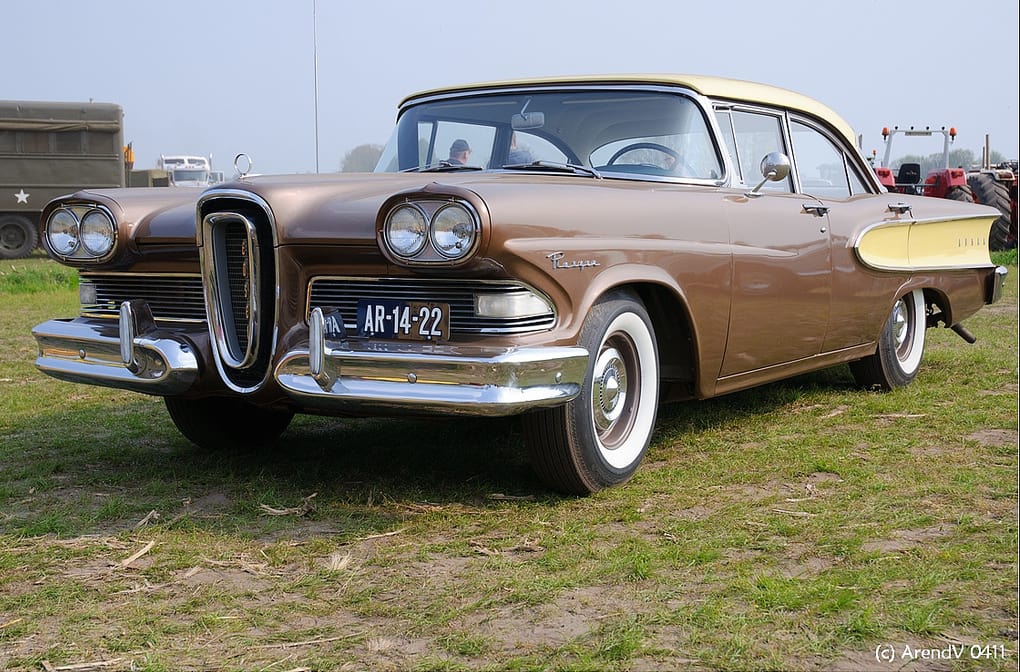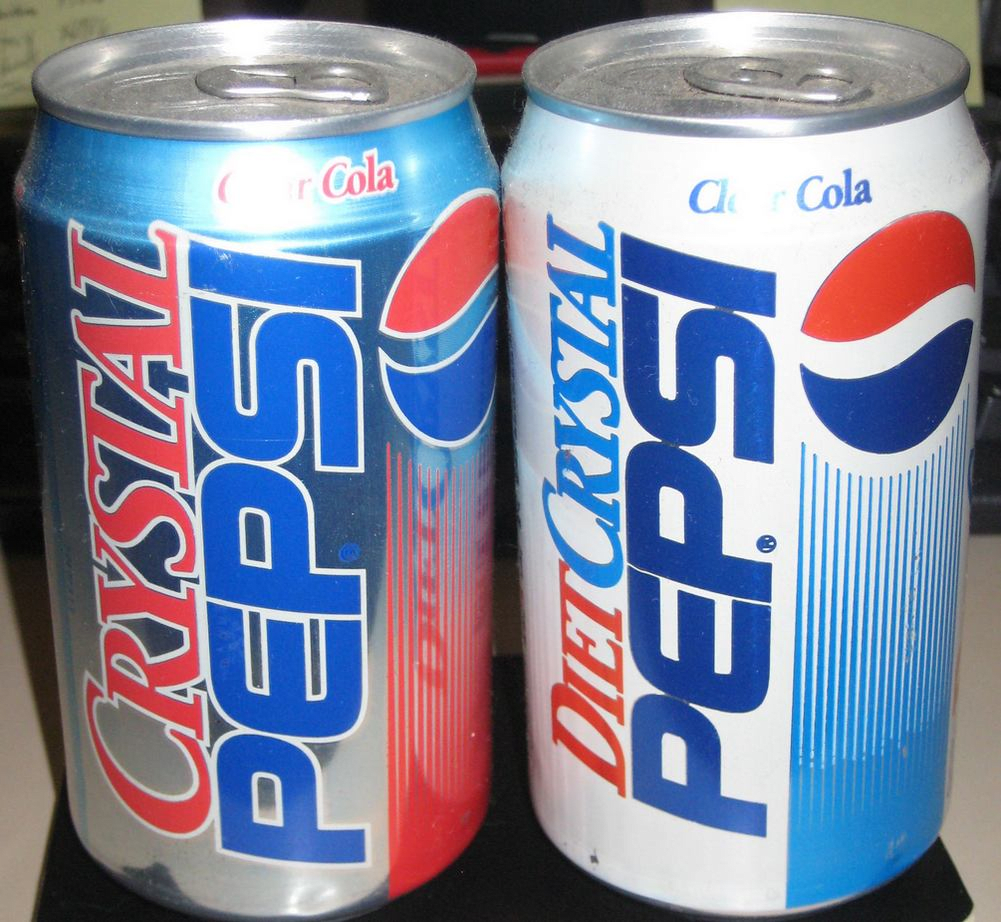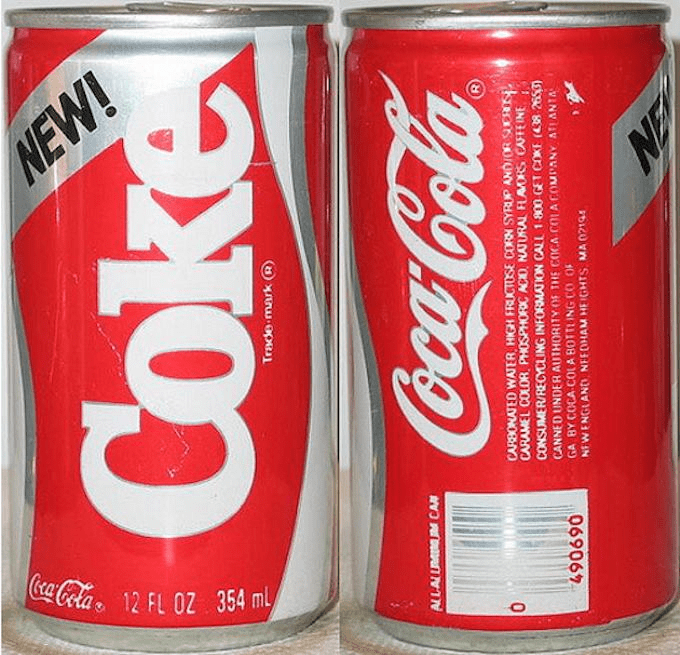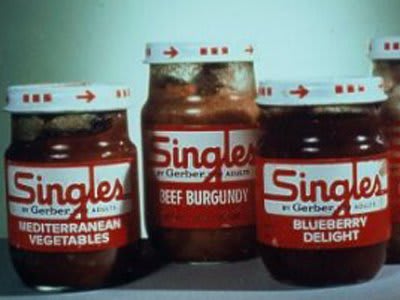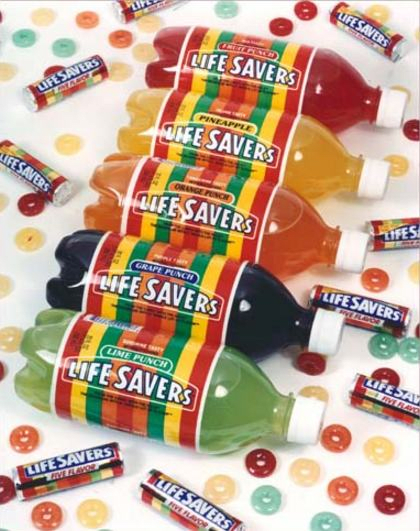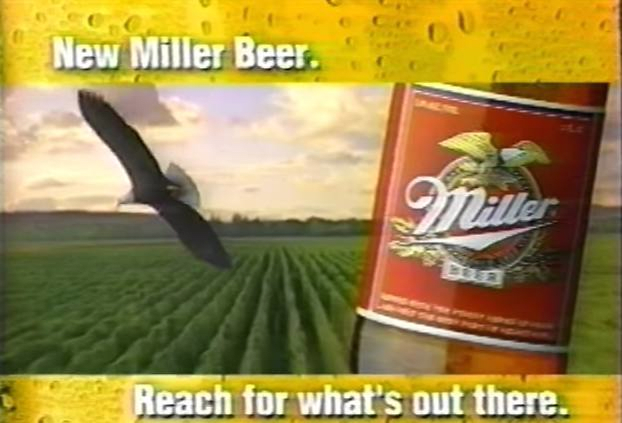If you’re over 40 you probably remember the fiasco that was New Coke, but there are many other examples of companies who launched a new product without really thinking it through (or doing enough market testing.) Nowadays they test the hell out of everything and there’s still the occasional failure, but none will probably ever compete with some of these doozies….
1. The Ford Edsel
Perhaps nothing embodies the idea of a commercial failure as much as the Edsel, which was unveiled on Sept. 4, 1957 to the public after a yearlong teaser campaign. It was met with resounding rejection, as customers deemed the gas-guzzling, pricey car an ugly waste of money. Three model years and 110,847 Edsels later, Ford pulled the plug on the Edsel in November 1959. Ultimately, Ford took a $250 million hit (in 1958 dollars, or about $2 billion today) for the development, manufacturing, and marketing of the vehicle.
2. Crystal Pepsi
For some reason, Pepsi got it into its head that cola shouldn’t be brown; it should be clear, while still tasting like cola but looking like a lemon-lime soda. That push for sensory confusion resulted in Crystal Pepsi, a caffeine-free “clear alternative” to regular colas.
“You’ve never seen a taste like this!” Pepsi promised, which was true, but not in a good way: many consumers were grossed out, confused, or just disappointed, with some insisting the beverage had a citrus hint to it. PepsiCo killed Crystal Pepsi in 1993 after only a year.
“People were saying we should stop and address some issues along the way, and they were right,” the man who conceptualized Crystal Pepsi, David Novak, told Fast Company in 2007. “It would have been nice if I’d made sure the product tasted good.”
Pepsi first brought it back as a one-off nostalgia item in 2015, before announcing on June 29 yet another limited-time resurrection of Crystal Pepsi. For what reason, we do not know.
3. Qwikster
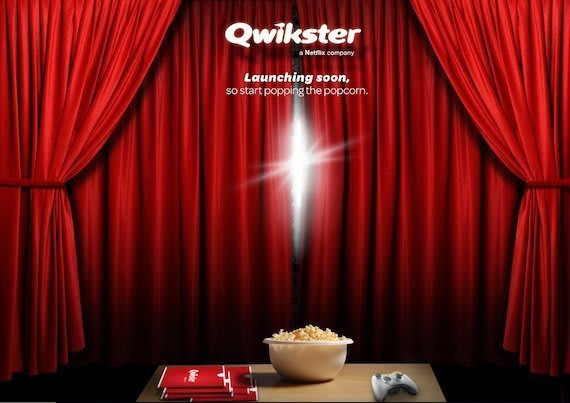 The well-chronicled debacle, which saw Netflix hiking prices and briefly separating its disc-rental arm into a different company in 2011 before reconsidering, resulted in diving stock prices and a massive pay cut for its CEO.
The well-chronicled debacle, which saw Netflix hiking prices and briefly separating its disc-rental arm into a different company in 2011 before reconsidering, resulted in diving stock prices and a massive pay cut for its CEO.
4. New Coke/Coke II
Thursday, April 23, 1985. That’s the date Coca-Cola announced a change to its secret formula — the first one in its 99 years — and a change that would forever link Coke with brand failures to come after it.
It wasn’t originally called New Coke — it was a can of Coke with the word “New!” on it, until 1992 when it was officially renamed Coke II.
The company calls it “arguably the biggest risk in consumer goods history,” while everyone else just calls it a big, fat flop.
The backlash from consumers was so immediate and so fierce, the company hurried to get the original recipe back on the market within three months of New Coke’s arrival. On July 11, 1985, Coca-Cola held a press conference to officially announce the return of the old Coke, and admit how very wrong it had been.
“The simple fact is that all of the time and money and skill poured into consumer research on a new Coca-Cola could not measure or reveal the depth and abiding emotional attachment to original Coca-Cola felt by so many people,” said Coca-Cola’s president at the time, Donald Keough.
5. Frito-Lay Lemonade

What would be perfect to wash down salty snacks? A big, cold glass of lemonade. That must have been the thinking behind the Frito-Lay brand’s unsuccessful foray into branded beverages with Frito-Lay lemonade; it didn’t work out so well.
Something about the Frito-Lay name just didn’t sound refreshing to consumers, Entrepreneur noted in 1998, and parent company PepsiCo dropped the product.
6. Tropicana carton redesign
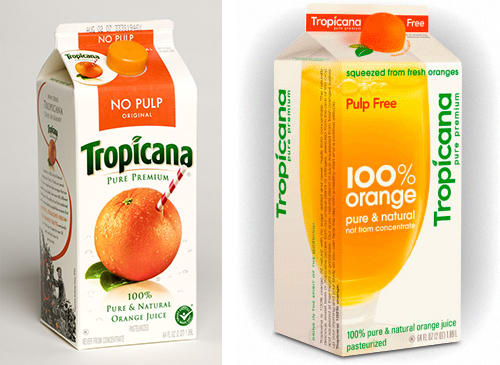
When it comes to breakfast beverages, Tropicana learned that messing with its brands is not a good move. In January 2009, Tropicana came out with a new look for its cartons, including a clever cap that looked just like an orange.
Clever or no, consumers haaaaaated it. The product went “poof” by the next month, and the original packaging reappeared on shelves in March.
“We underestimated the deep emotional bond” loyal customers had with the original packaging, Neil Campbell, president at Tropicana North America in Chicago explained to The New York Times then. “Those consumers are very important to us, so we responded.”
7. Gerber’s single servings for adults
Pre-made baby food is super convenient for parents: You get the meal in a jar; it’s the right size for your 10-month-old; it’s already pureed; and it’s portable. Win/win.
However, jars of mush — aside from maybe applesauce and Soylent — do not generally appeal to most adults. In fact, the list of people over 21 who have ever thought, “I wish my beef bourguignon were all pre-mashed and then stuffed in a jar” is infinitesimally small — and so was the market for Gerber Singles, one of 1974’s worst ideas.
The plan had been to sell the product to college students and young adults who had moved out of mom’s house and might not be otherwise able to feed themselves. It turns out, young adults had plenty of other options they liked better — anything other than adult baby food, for example.
8. Bic Underwear & Hosiery
If we say “Bic,” the first thing that leaps into your mind is probably going to be “ball-point pen.” Pencils and highlighters might be close runners-up, and, if you’re feeling particularly thoughtful, you might mention disposable razors or lighters. You are not, however, likely to think of undergarments and hosiery.
The women’s underwear line, which included pantyhose, launched in 1998. It was — like all those other Bic products — designed to be disposable. The problem is, most women aren’t really looking for disposable underwear. Nor are they planning to buy underwear from stores (or sections of stores) where Bic’s other products are sold; at least not unless it’s an emergency.
The products — which never launched in the United States — quietly disappeared from overseas stores in 1999. We found a pair on eBay recently, if you’re still interested.
9. Lifesavers Soda
Lifesavers have been around since 1912, but in the 1980s, Wrigley thought it might make a run at the beverage market with a candy-flavored soda.
Sugar plus sugar — sounds like a sure thing for the go-go-go ’80s, right? Not so much. Some folks found the fizzy drink too sweet, like drinking “liquid candy,” and the product disappeared into the sugary chasm from whence it came.
10. Miller Beer
In the mid-1990s, there was Budweiser and Coors, but while Miller Brewing Company had a variety of namesake beer brands — Miller High Life, Miller Lite, Miller Genuine Draft — it didn’t have a flagship mononym brew like the competition did.
So in early 1996, Miller launched a new product, simply called “Miller,” which featured the company’s trademark against a red and blue background on a traditional brown bottle, calling it “different from any existing premium beer.”
It didn’t go very well, coming up short on a company goal to hit 1% market share by the end of 1996, Milwaukee Business Journal reported in 1997, and the company soon took plain-old Miller off the shelves.
11. Gap logo redesign
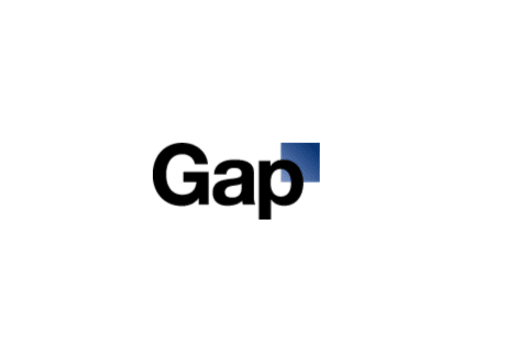
In October 2010, Gap executives apparently figured out how to use Photoshop, or at least whatever crude graphics program came preinstalled on their office computers, with the resulting logo looking liked it belonged on a cracked plastic sign outside an anonymous office park warehouse, instead of a huge national clothing retailer.
Everyone hated it, because look at that thing — it’s “as bland and uninteresting as jeans and a black t-shirt,” as we wrote then.
Only two days later, Gap scrapped the crap logo, saying, “We’ve heard loud and clear that you don’t like the new logo. We’ve learned a lot from the feedback. We only want what’s best for the brand and our customers.”
12. Kellogg’s Cereal Mates
https://www.youtube.com/watch?v=GqaEN7lj_u4
Portable cereal is not actually a bad idea. On-the-go breakfasts are popular. Cereal is popular. Putting the two together seems like a strong commercial idea and, indeed, your modern grocery store has a lot of different portable, single-serving options. Kellogg’s 1998 attempt, however, hit the sweet spot of “does not solve problem” and “too weird,” and failed miserably as a result.
The packages — containing a single-serve sealed bowl of cereal, a box of milk, and a spoon — were advertised as something to find in the fridge case, to make your family’s chaotic morning easier. The thing is, cereal you keep in the fridge tastes kind of meh by the time you open it. And shelf-stable milk, while perfectly safe if properly packaged, continues to be a hard sell for most American shoppers.
So Kellogg’s managed to capture the worst of both worlds — soft cereal and warm milk — while making the product too high-priced and redundant to use at home and too cumbersome to take on the road.
13. Coors Rocky Mountain Sparkling Water
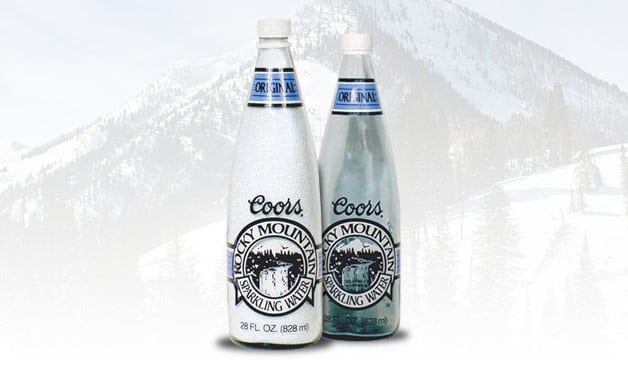
Coors says its been brewing its beer with “pure rocky mountain spring water” since 1873, and in 1990, the company decided to take the alcohol out of the equation and just sell straight-up sparkling spring water.
Despite the growing popularity of bottled water, many shoppers were confused by the company’s first non-alcoholic beverage since Prohibition, which featured a Coors logo just like its beer products. Coors abandoned the idea two years after launch.
14. Colgate’s Kitchen Entrees

Food is something you are supposed to eat, and it makes your teeth dirty. Toothpaste is something you are not supposed to eat, and it makes your teeth clean. So you can get an immediate sense of why toothpaste-branded food was maybe doomed to failure.
Frozen meals were all the rage in 1982, and you can see why Colgate-Palmolive wanted in on the trend. Much harder to understand is why they thought the Colgate toothpaste branding would help sell savory foods. Nobody wants their toothpaste to taste like stir-fry… or their stir-fry to taste like toothpaste.
They did not last long on store shelves and quietly disappeared a few months thereafter.
15. Orbitz Soda
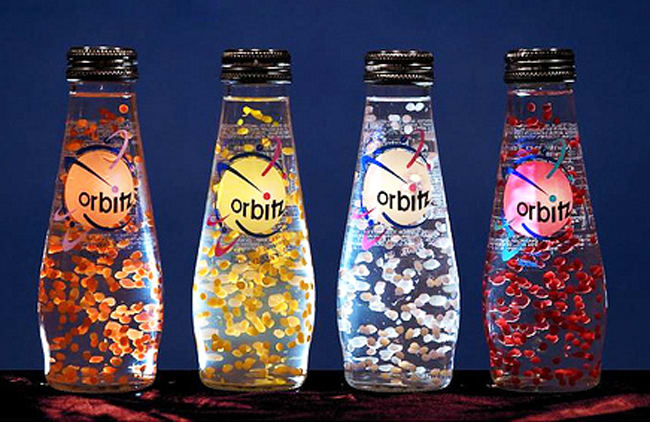 Made by Clearly Canadian, Orbitz looked like a drinkable lava lamp: marketers touted the fruity soft drink filled with gelatinous spheres as a “texturally enhanced alternative beverage,” but many consumers just thought it was gross. The drink was shelved in 1997 a year after it debuted, while its name has been repurposed by a certain online travel booking company.
Made by Clearly Canadian, Orbitz looked like a drinkable lava lamp: marketers touted the fruity soft drink filled with gelatinous spheres as a “texturally enhanced alternative beverage,” but many consumers just thought it was gross. The drink was shelved in 1997 a year after it debuted, while its name has been repurposed by a certain online travel booking company.
16. Frito-Lay WOW Chips
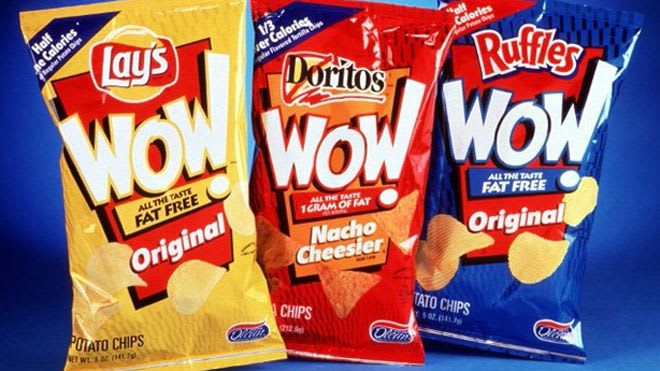
If you don’t remember WOW chips, consider yourself luckier than many consumers who actually bought them… and whose bodies did not respond well to olestra, the fat substitute used to reduce the fat content of these chips.
First introduced in 1998, Frito’s new idea was popular at the beginning, with WOW versions of Lay’s, Ruffles, Doritos, and Tostitos bringing in $400 million in sales. But by 2000, sales had dipped to $200 million, after many customers reported anal leakage caused by olestra.
A new warning was added to packaging as well: “This Product Contains Olestra. Olestra may cause abdominal cramping and loose stools. Olestra inhibits the absorption of some vitamins and other nutrients. Vitamins A, D, E, and K have been added.”
The chips were rebranded to “Light” around the same time, and WOW disappeared, leaving only painful, streaky memories behind.
17. Keurig KOLD

While folks might love their single-serving coffee machines from Keurig, the company made a big mistake trying to compete with SodaStream. The Keurig KOLD was a soda-making machine that cost $370 when it was introduced in 2015 — and it fell flat.
After less than a year on the market, Keurig said it would be discontinuing the product and offering refunds to anyone who bought it.
That is, if anyone actually bought it.
